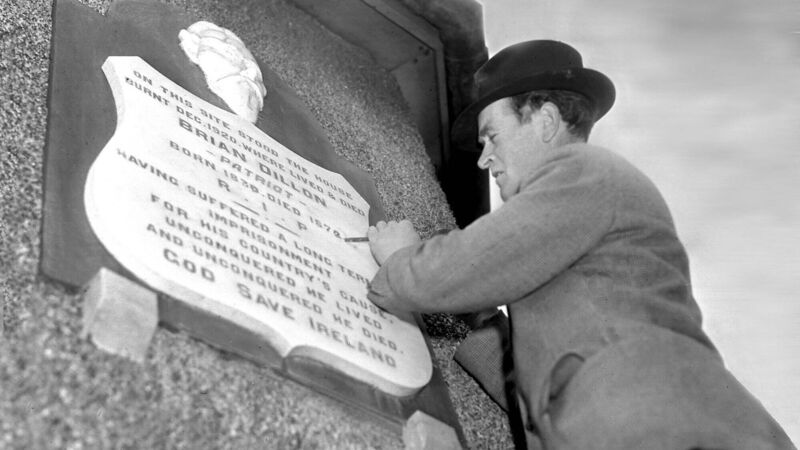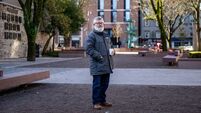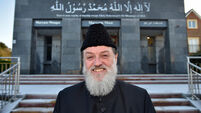Michael Moynihan: Murphy's wisdom and works leaves a legacy carved in stone

Memorial plaque at the former home of Brian Dillon at Dillon's Cross, Cork being repaired by Seamus Murphy, sculptor. 06/05/1952 Ref. 467E Old black and white the arts monuments patriots
I had the ultimate column-affirming experience strolling through town the other day, when a car pulled in and the driver leaned out the window.
“I like what you’re writing,” he said to start with. I preened a little. Affirmed.












